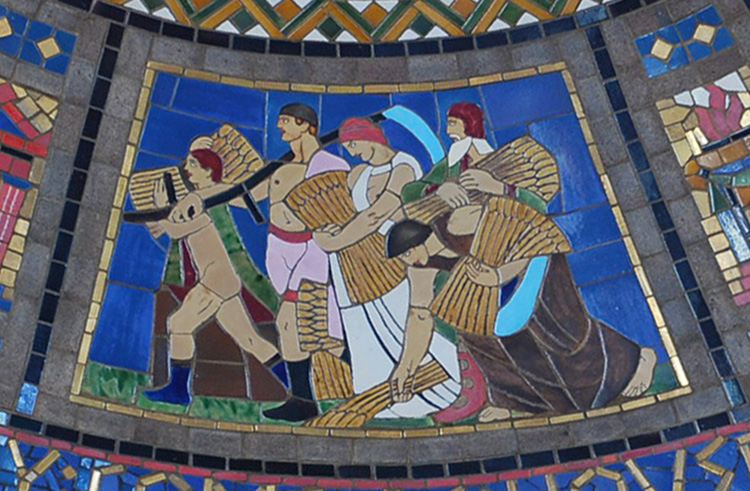
In 1919 Congress submitted the 19th Amendment to the United States Constitution to the states for ratification. In 1919, the Nebraska legislature passed the law that created the Nebraska Capitol Commission and began the process which built Nebraska’s seat of government and monument to the spirit of Nebraska. In 1920, the Nebraska Capitol Commission choose Bertram Grosvenor Goodhue as architect of the new Capitol. In 1920 the 19th Amendment was ratified giving women the right to vote in state and national elections.
In the early 1920’s, while having the right to vote, women had still not moved into the larger worlds of labor and government. But things were beginning to change. Architect Bertram Goodhue chose a young woman for his design team. Hildreth Meiere was a woman ahead of her time. She had served as a drafter mapmaker in the United States Navy during World War 1. She had studied art abroad and had returned to America to enter the male dominated field of professional mural artist. Her commission to decorate the floors and ceilings of the Nebraska State was her first major commission and enabled her to establish a reputation which allowed her to start her own studio and successfully gain commissions all over the United States.

Her artwork in the Capitol presents female figures on equal footing with the male figures, and as in her other work the female figures are heroic and dynamic.

Even as Hildreth Meiere was blazing a trail for women artists with her Capitol work, some old ways were slow to change. Designed after women had the right to vote, and as progressive as Goodhue was, the Capitol’s two Legislative Lounges still only had one restroom assigned to MEN.